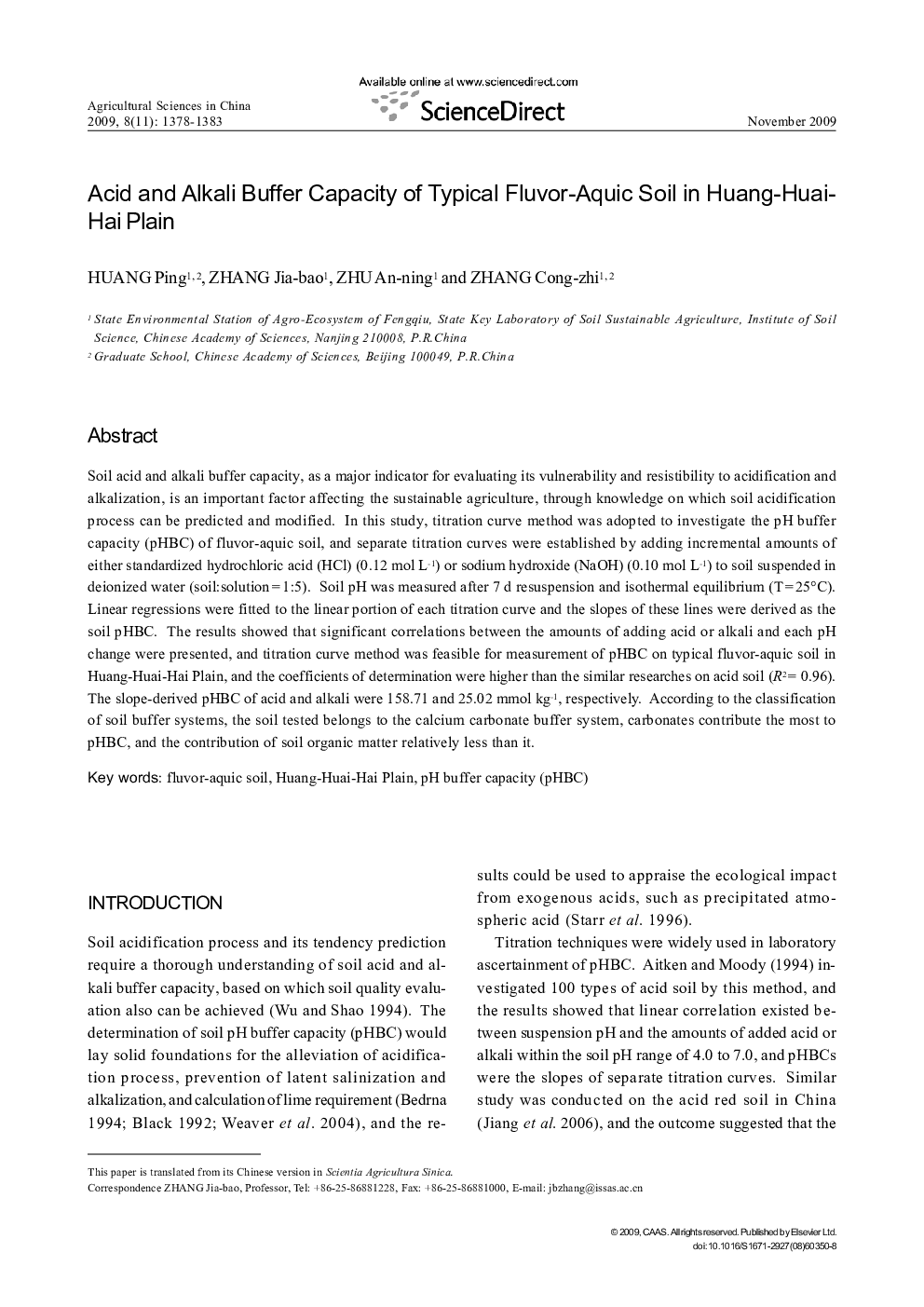| Article ID | Journal | Published Year | Pages | File Type |
|---|---|---|---|---|
| 4490299 | Agricultural Sciences in China | 2009 | 6 Pages |
Soil acid and alkali buffer capacity, as a major indicator for evaluating its vulnerability and resistibility to acidification and alkalization, is an important factor affecting the sustainable agriculture, through knowledge on which soil acidification process can be predicted and modified. In this study, titration curve method was adopted to investigate the pH buffer capacity (pHBC) of fluvor-aquic soil, and separate titration curves were established by adding incremental amounts of either standardized hydrochloric acid (HCl) (0.12 mol L−1) or sodium hydroxide (NaOH) (0.10 mol L−1) to soil suspended in deionized water (soil:solution = 1:5). Soil pH was measured after 7 d resuspension and isothermal equilibrium (T = 25°C). Linear regressions were fitted to the linear portion of each titration curve and the slopes of these lines were derived as the soil pHBC. The results showed that significant correlations between the amounts of adding acid or alkali and each pH change were presented, and titration curve method was feasible for measurement of pHBC on typical fluvor-aquic soil in Huang-Huai-Hai Plain, and the coefficients of determination were higher than the similar researches on acid soil (R2 = 0.96). The slope-derived pHBC of acid and alkali were 158.71 and 25.02 mmol kg−1, respectively. According to the classification of soil buffer systems, the soil tested belongs to the calcium carbonate buffer system, carbonates contribute the most to pHBC, and the contribution of soil organic matter relatively less than it.
